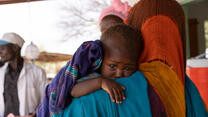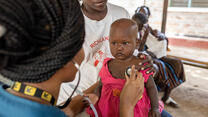In emergency situations, case management plays a vital role in connecting the most vulnerable members of a population with the services that they need to survive and thrive. The International Rescue Committee (IRC) addresses child protection concerns through case management services in both refugee/internally displaced person (IDP) camps and urban settings.
IRC case management services identify and assess the needs of children with particular vulnerabilities, such as unaccompanied and separated children, connect them with critical services needed through an established referral network, and ensure that children remain safe and secure. Typically, the IRC’s child case management services last between six and 18 months, depending on the child’s individual needs. This analysis covers six IRC case management programs in five countries and includes programs providing services within refugee/IDP camps and in urban settings.
- “Case management” includes both the assessment and management of a child’s needs, as well as the various services to which that child is referred to meet those needs. Case worker responsibilities include conducting needs assessments, providing material support and accommodation, and referring children to medical and psychosocial support services. The value of material support, accommodation, or referral services can have a significant impact on cost levels. This analysis considers only the specific costs of providing case management to the IRC, not the cost of in-kind donations or services referred.
- The IRC’s case management services cost an average of $764 per child over the course of one year in urban settings in the Middle East, $187 in refugee/IDP camps in eastern Africa, and $874 in rural Sahel areas. Personnel are the largest expense—approximately 64 percent of total cost—for case management programs for at-risk children. For the programs included in this analysis, the dollar value spent on national staff was significantly higher than international staff, with approximately $3 spent on national staff to every $1 spent on international staff. For case management programs, where costs are heavily allocated towards personnel, it is especially important to establish a robust staffing plan at the onset of a program to ensure that staff resources are matched to needs.
- The scale at which programs operate has major impact on the cost per child served. However, scale in terms of the number of children served is not the only way to improve efficiency. Sharing fixed costs with other programs operated by the organization reduces the percent of a budget dedicated to support functions such as payroll or procurement. Programs that are part of multi-sector camp operations are, on average, more cost efficient than urban programs only conducting case management services, due to the volume of other activities that share fixed costs. Eastern Africa grants had two-to-four times the volume of other activities sharing the same fixed costs, as compared to programs in the Middle East.
- Cost analyses of programs that provide sustained services are likely to underestimate the actual resource costs of case management programs, if they consider only one grant’s worth of funding. Multiple donors contributing to different aspects of the same service often support case management in a particular setting. Programs in this analysis received funding from up to four separate donors. Generating cost estimates from an office’s operating budgets and expenses, rather than individual donor reports, can better capture the true resource cost.
- One case management program in Lebanon also offered supplemental training for caseworkers at a cost of approximately $8 per child ultimately served by the trained caseworkers. Although the costs of supplemental training per caseworker were substantial overall, when those cost were calculated per child served in the program the cost of training caseworkers was quite low. This finding invites additional research about the cost effectiveness of case management with or without these trainings; if the marginal investment in staff capacity improved outcomes for children by even a relatively small amount, then the investment is worthwhile.



